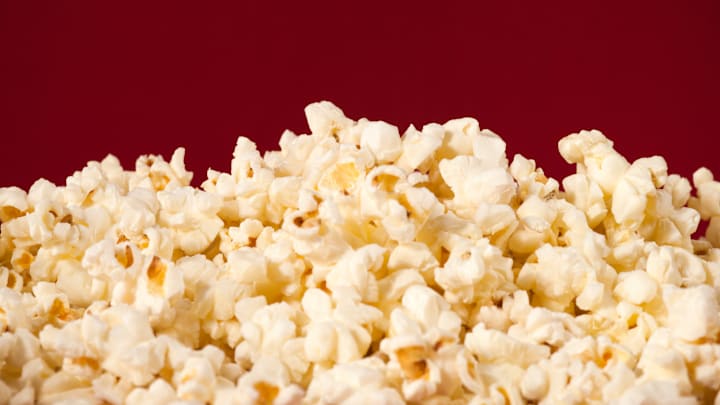Let’s face it: There’s no better feeling than sitting down at a blockbuster with a massive tub of popcorn and a 64 oz soda. (Though it can be argued that there’s no worse feeling than missing part of the movie due to the inevitable trip to the bathroom once you finish the whole thing.)
If you think that the stuff you buy in theaters is significantly better than anything you pop in your microwave, you’re not alone: 83 percent of Americans agree that movie theater popcorn just tastes better.
The question is, why do we think this way? Is it simply something in the ambiance, or is there a secret ingredient both AMC and your local theater is keeping close to their chest? We have the answers.
Why Movie Theater Popcorn Tastes Better
Movie theater popcorn’s superior flavor isn’t a placebo effect. It actually does contain an ingredient or two that differs from the stuff you make at home.
Though everyone may think the trick to delicious, savory popcorn is to pile on the butter, the real enhancer lies in something called Flavacol. It’s a seasoning that contains artificial flavoring and yellow dyes to mimic that butter-like appearance. Flavacol is fine enough to easily stick to the popcorn once it’s added, so it won’t come off on your fingers.
The butter-flavored salt isn’t the only thing that makes movie theater popcorn different than the snacks in your pantry. Theater popcorn doesn’t typically contain any butter. It instead uses oil—typically refined coconut oil—mixed with Flavacol.
The extra “butter” you can add to movie theater popcorn also isn’t what you think it is. That vivid yellow topping you’ll see concession stand employees pumping onto giant buckets of the snack is really a mix of soybean oil, beta carotene, preservatives, and some sort of artificial butter flavor.
Why do movie theaters serve popcorn?
Theaters initially wanted nothing to do with popcorn, which can get pretty messy once people start spilling it all over their seats and the floor. But that changed in the late 1920s. The rise of “talkies” (non-silent films) and the Great Depression made movies a popular, affordable escape for all.
Popcorn, being cheap and easy to make, became the natural snack of choice. Street vendors sold it outside theaters; eventually, theater owners caught on and began selling the food inside their venues.
World War II also boosted the snack’s popularity. Popcorn sales soared as candy and other sugary items were in short supply during the war, further cementing its spot as a go-to movie theater treat.
Read More About Snack Foods:
